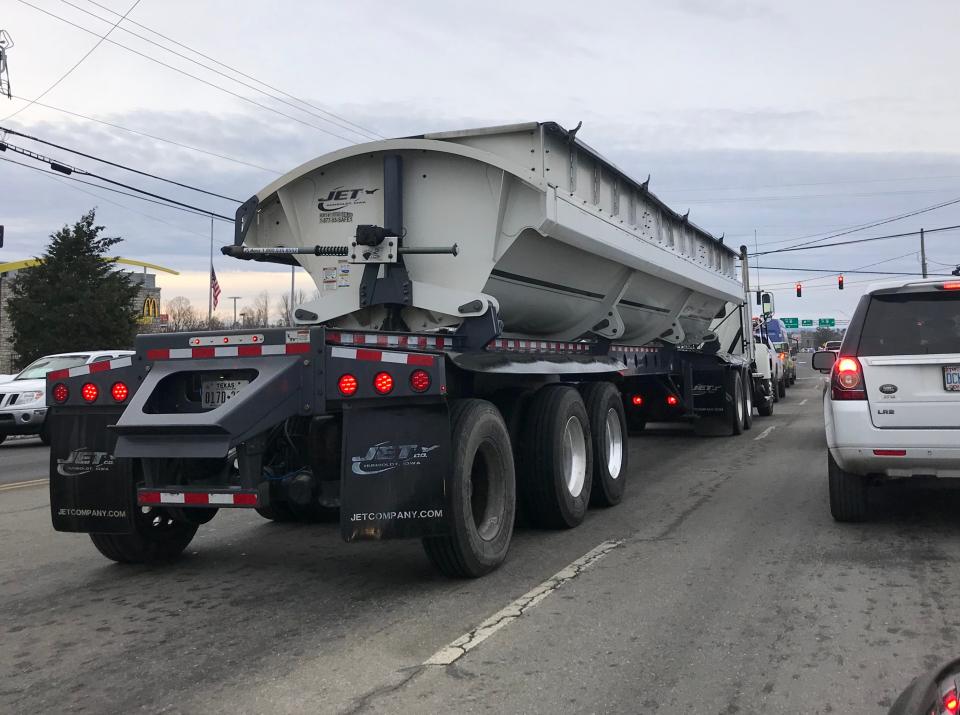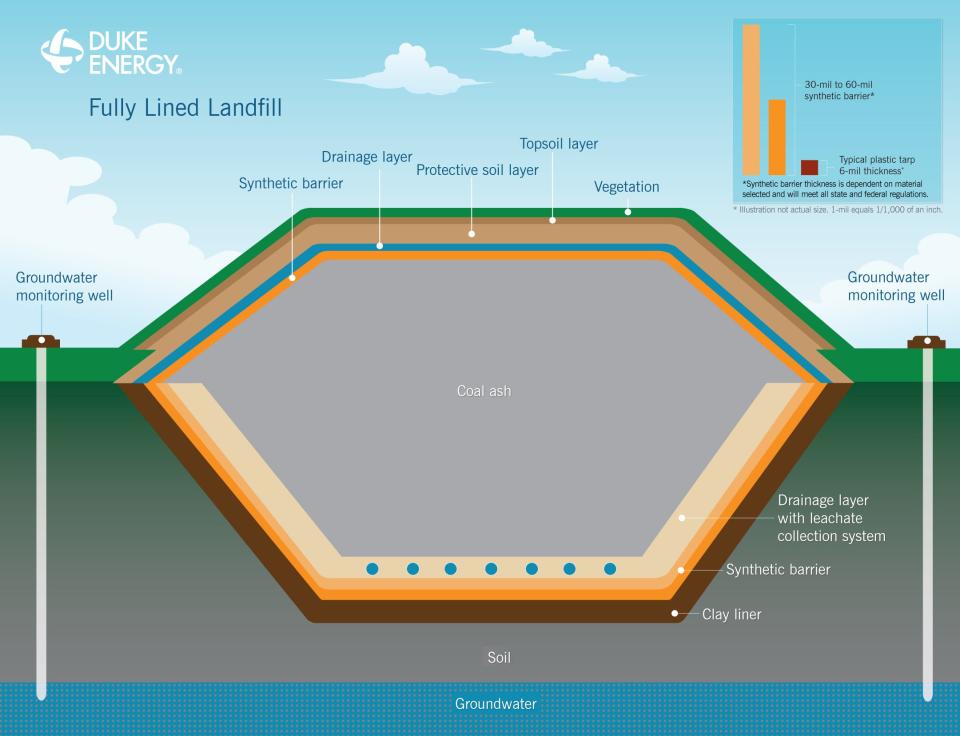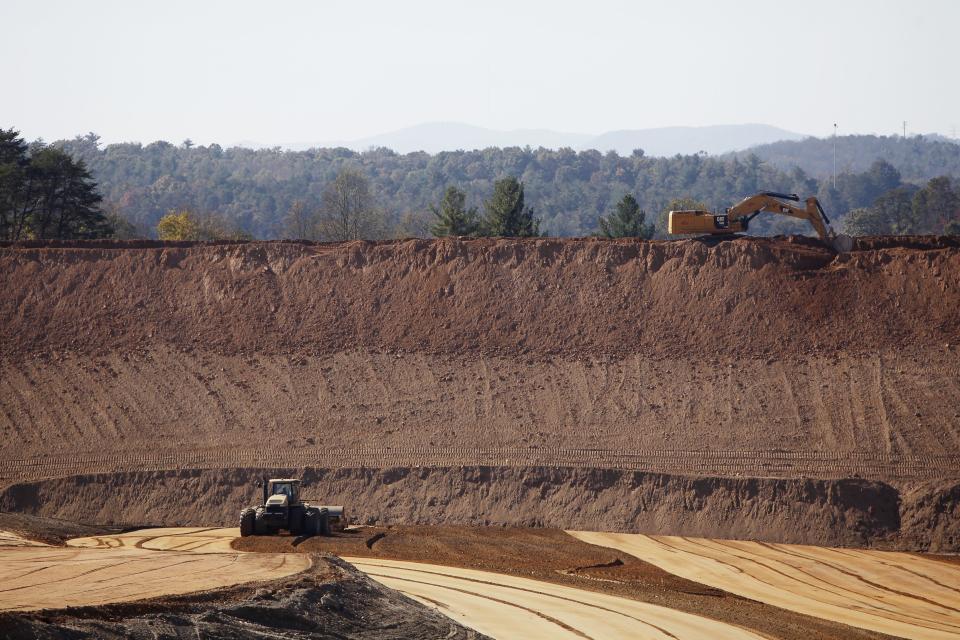Answer Man: Will Duke Energy remove coal ash dams at Lake Julian? Changes to Broadway?
Today’s batch of burning questions, my smart-aleck answers and the real deal:
Question: At Lake Julian, I think Duke Energy has removed all of the coal ash. But are the dams still there? If so, what are they going to do with all of these? And what about the empty ponds? Are they being leveled out? If not, it seems like they would still hold water, which could be a problem. Also, is all the coal ash completely gone? I know some went to the Airport. Where did the rest go?
My answer: I don't know, but I-26 sure is getting suspiciously wide in places.
Real answer: Duke transitioned in 2020 to a new gas-fired "combined cycle station" at Lake Julian, and it's 75% more efficient than the coal plant it replaced. It also eliminated the need for coal shipments, burning of coal and storage of the ash in ponds on site.
"We finished excavating one Asheville basin in 2016, and the other basin stopped receiving ash in January 2020 with the coal plant’s retirement," Duke Energy spokesman Bill Norton said via email. "Excavation of the second basin is nearly complete, ahead of our August 2022 deadline."
Answer Man: Duke Energy shipping old Lake Julian coal burners overseas?
You may remember seeing a lot of specialized trucks on the roads around the plant and on I-26 hauling coal ash to the airport and elsewhere. Much of it went to Asheville Regional Airport, which needed fill for its new runway project.

"The majority of the ash was beneficially reused at the airport or safely recycled offsite at Roanoke Cement," Norton said. "To reduce costs for customers and eliminate truck traffic hauling coal ash off site, the final phase of ash was excavated into an industrial landfill within company property – a double-lined landfill away from water."

We wrote about this landfill, which the state Department of Environmental Quality permitted back in 2020. Norton noted it's a "12.5-acre landfill within the plant site – it handles only ash, nothing from offsite."
As our previous story noted, DEQ’s assessment was that the landfill, located within the 4,000 acres of the facility property, "meets the appropriate buffers to property lines and surface waters in the General Statutes that are intended to protect human health.”
Now, about the actual dams for those old coal ash basins at Lake Julian. Norton said said once the excavation of the second basin is complete, "soil samples will be taken to verify the ash removal."
"After regulators review the soil tests and confirm that excavation is complete, we will remove the ash basin dams and contour the area for stormwater and drainage management," Norton said.

This leaves Duke with quite a bit of land at Lake Julian to repurpose.
"We’re repurposing as much of this land as possible for North Carolina’s clean energy transition," Norton said. "The new Asheville Combined Cycle Station – which is 75% more efficient than the coal plant it replaced – was built in the footprint of this site’s first excavated basin, and the landfill will be topped with solar panels."
Question: Broadway from I-240 to Five Points is becoming a real neighborhood, with new apartments and townhomes. Is there any plan for slowing traffic on this section of the road by restriping to three lanes and adding bike lanes?
My answer: One day I suspect I'll be able to ride my bike into work all the way from Fletcher to downtown Asheville, ensconced in a lovely bike lane the whole way. Clarification: someone who is fit and not 40 pounds overweight will be able to ride my bike all the way into town in a bike lane.
Real answer: Clearly, between proposals for bike lanes on Merrimon Avenue and downtown, Asheville has a lot of momentum going for bike lanes these days.
Alas, Broadway is not getting swept up in that momentum — at least not yet.
"There are no plans at this time to consider changes to Broadway," city of Asheville spokeswoman Kim Miller said via email. "There will be a new pedestrian crossing signal located on Broadway as part of the Public Safety station project that is currently under construction."
This is the opinion of John Boyle. To submit a question, contact him at 232-5847 or jboyle@citizen-times.com.
This article originally appeared on Asheville Citizen Times: Answer Man: Will Duke Energy remove coal ash dams at Lake Julian?

